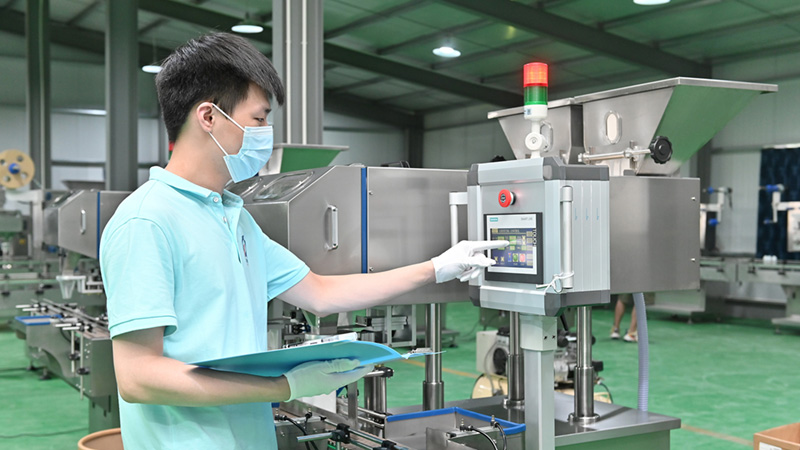A blister packaging machine operates by filling pre-formed plastic or aluminum blisters with something like tablets, capsules other small items and sealing the blisters onto a backing material which is normally either paperboard, foil or Pvc. This process is extensively utilized in the pharmaceutical industry, as well as food and consumer goods industries because it can prevent products from moisture or light when sealed perfectly along with a tamper-evident seal.
Now the process of induction is started and blister cavities are formed. The machine takes a roll of some type of plastic or aluminum that is heated to a certain temperature, usually in the range between 120°C and180°C(depending on material) [GOES HERE] The molten material is then forced into the shape of a mold or die. It is essential that a blister accurately meets the product's dimensions since one of the primal Hashmi package machines to be used, and therefore improves shelf life. These can be made at a rate of 600 blisters per minute in high speed machines and provide cavities thus making it feasible for large production.
After the blisters created, machine signals move to fill station where products are placed accurately in every cavity. This step is critically important for pharmaceutical applications as it helps to safeguard dosage accuracy. The better quality machines used robotic visualization to fill an exact blister with a correct number of tablets or capsules accuracy up-to 99.9%. Accurate measurements are critical to adhere regulations and keeping the patient in safe side.
The next step is to seal the blisters with a support (usually foil or plastic film). The sealing using is by heat and pressure usually with temperatures between 150°C to 250°C that forms a strong bond of the blister into backing material. The carving should be airtight to protect the substance, such as if measuring and packaging pharmaceuticals where contact with the air can degrade effective components or contamination from outside is undesirable. The strength and retention of the seal are routinely checked to meet industry specifications so that your product will always be both safe, secure as well maintaining optimum quality from fulfillment all the way through shelf life.
Some blister packing machine is fast and efficient. The production output is more significant, and high-performance machines can fill up to 1,200 blisters per minute. This speed results in an economic benefit, as manufacturers can produce large quantities of packaged products more efficiently by saving energy and labor hours. The automation by these machines also reduces the possibilities of human error, which further contributes to improve production efficiency.
Blister packing machines are versatile Adjustable to different product sizes and shapes, these machines are good for many applications. A single machine can handle everything from small tablets to big capsules, needing nothing more than a forming die change and filling method adjustment. The option to handle different distribution through a single machine, without the need for separate packaging equipment is extremely beneficial as it provides manufacturers producing multiple product lines all with access and reduces running costs at various entry levels.

It also is a matter of cost efficiency. While the upfront expense of purchasing blister packing equipment can run between $50,000 to $500,000 based on what machine you get and its capability or cavitation levels; however your overall savings will be tremendous. The precision of both filling and sealing processes, along with the automation allows for an efficient packing process while reducing labor costs — diversely useful during a food material shortage. Additionally, the improve product protection afforded by blister packaging can prolong perishable goods' shelf life and lower risk of loss due to spoilage.
Compliance with the regulations are another reason why blister packing machines have great importance. Packaging in, say the Pharmaceuticals industry must follow extremely strict regulations to guarantee product safety and efficacy. Blister packs are used to provide tamper-evident packaging which can be a requirement for many medications. This type of packaging is something that manufacturers must become capable to produce in this industry if they are going to avoid recalls and legal trouble. According to pharmacy expert Dr. James Taylor: “The packaging integrity is as important for your product quality than the product itself“. Even good medicines can be harmful without proper packaging.
For blister packing machines, maintenance and durability is absolutely crucial for their continued operation in the long run. They are durable enough that with the right care, some models can run for more than a decade. Cleaning and lubrication, as well the renewal of wear parts through regular servicing keeps machine performance at its highest level reducing maintenance concerns in favor of production time.
A blister packing machine is the backbone of every manufacturing process, and it helps to wrap products in a consistent manner, as well. The benefits of protection, accurately dosing products and regulatory compliances are making it a must have equipment in almost every industry whether its Pharma or Consumer product. These machines help manufacturers increase their production capacity and lower costs, while ensuring the high quality of products along with product safety.